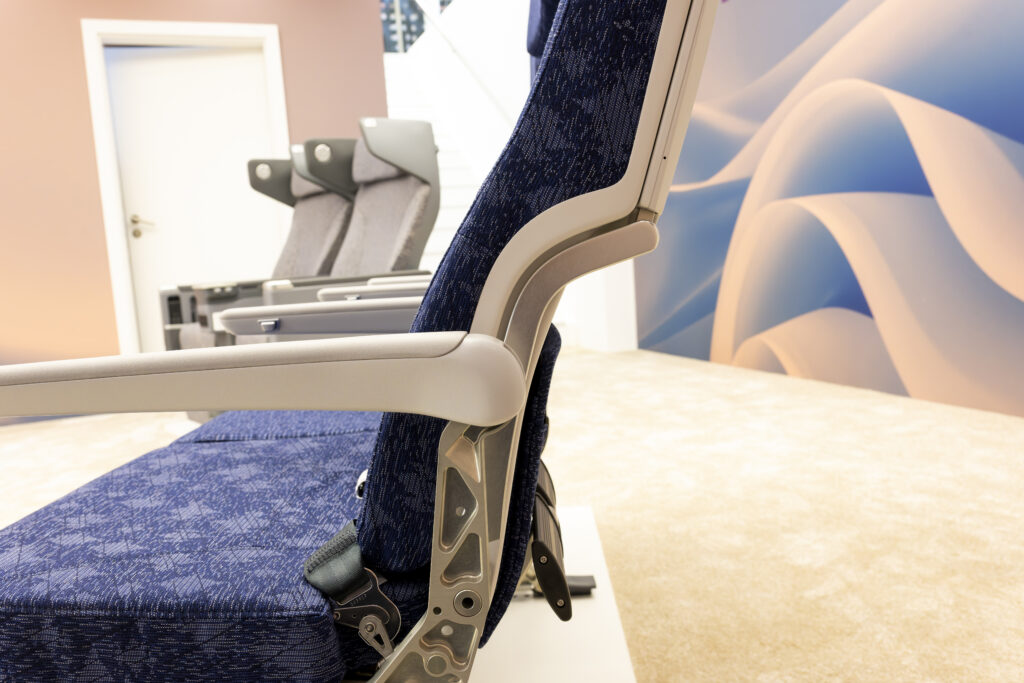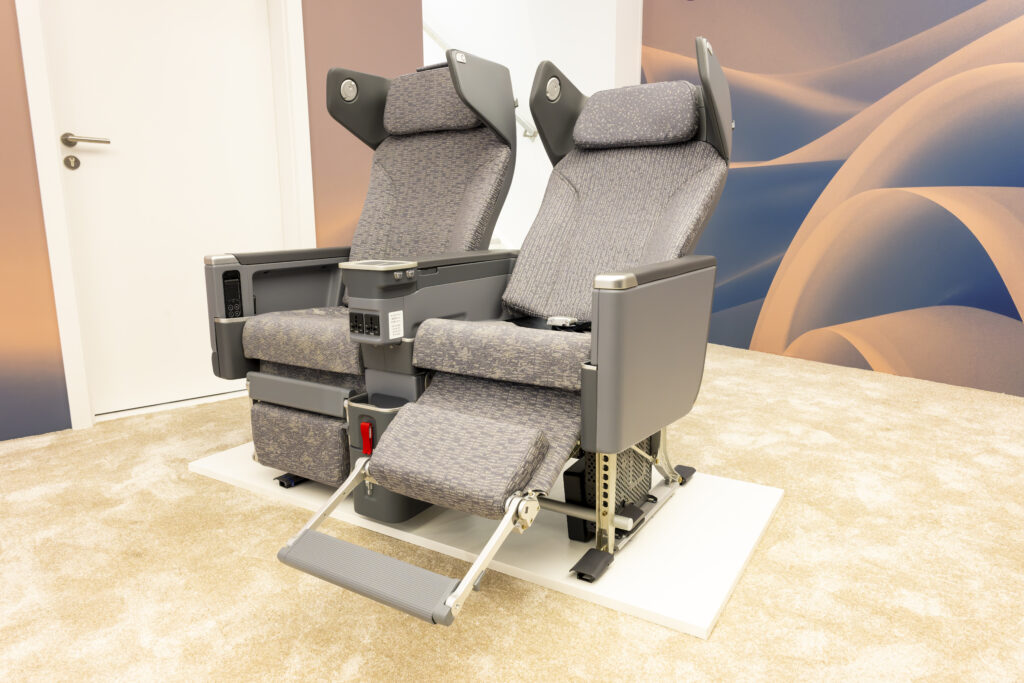HAMBURG — Japanese full-service airline ANA is to install Recaro’s R3 economy (previously the CL3810) and R4 premium economy (previously PL3810) on nineteen Boeing 787-9 aircraft to serve its international network, starting next year. Both replace Safran Seats, the incumbent on the airline’s existing internationally configured Boeing 787-9 (and indeed -8) aircraft.
ANA is pitching the R3 in economy at an impressive 34 inches, some three to four inches above the standard in modern economy seats, but retaining the 3-3-3 nine-abreast configuration that sets it at an unusual passenger experience disparity with hometown rival and principal competitor Japan Airlines. JAL’s Dreamliners offer the substantially more spacious eight-abreast 2-4-2 layout that Boeing originally recommended for the 787’s longhaul international configuration, but with a 33” seat pitch.
In person on the Recaro stand, though — and with ANA acknowledging that the single row of seats shown meant that the experience of R3 at 34” pitch was not possible to examine — it was the extra two inches of recline on the R3 that really wowed in terms of comfort. This two inches was truly a gamechanger, with the articulation and weight distribution especially impressive.
The R4 in premium economy will meanwhile be pitched at 40”, an increase of 2” over the previous generation of seats and 2-5 inches above other comparable airlines’ products. While, again, only one row of seats was present, the product is one of the market leaders for a reason, and was very comfortable both in seated and in the substantial recline.
Miyagawa Hiroyuki, executive vice president for the EMEA region, confirmed this is a 19-shipset order, comprising three new linefit 787-9 aircraft and sixteen refurbished aircraft. Miyagawa also confirmed that the first delivery of the new interiors will take place in 2026, with the first aircraft being factory-fresh. An ANA spokesperson later confirmed these three aircraft are not part of ANA’s February 2025 announcement of an eighteen-jet order for 787-9s, which were earmarked at time of announcement for international routes. ANA operates multiple domestic and international versions of the 787-9 aircraft, as well as the all-economy version on its Air Japan long-haul low-cost subsidiary.
In terms of look and feel, the seat fabrics on both seats come in a variety of interchangeable patterns, either in a medium-deep blue (a shade reminiscent of traditional Japanese kon-kasuri woven dyeing) for economy or a grey for premium economy. The interchangeability is designed to break up the view of serried ranks of otherwise identical seats, which might be useful in economy but seems unlikely to be of great effect in a premium economy cabin of only a handful of rows, and risks looking bitty or uncoordinated in a cabin where it seems the plan is to have headrest, seatback, seat pan (and, in premium economy, legrest) all different fabrics.
When pressed on the inflight connectivity supplier that will go aside these seats, ANA was keeping mum, promising a reveal alongside the business class seats (currently a version of Safran’s Skylounge staggered seat) later this year.
Director for cabin products and services planning Maki Katsunori did, however, tell RGN in Hamburg that “flight time is getting longer and longer — then how can we maintain the comfort in that type of cabin? The easiest thing is to increase seat pitch, but we already reached 34″: further increase doesn’t make any sense. So in such a space… for most of economy, the passenger experience is not on the comfort of the seat, but how they can spend the time in that cabin.
“So now we are starting consideration of complimentary wifi service. Now we only offer it in the business [and first class], but that trend is expanding in the future.”
Related Articles:
All images credited to ANA




